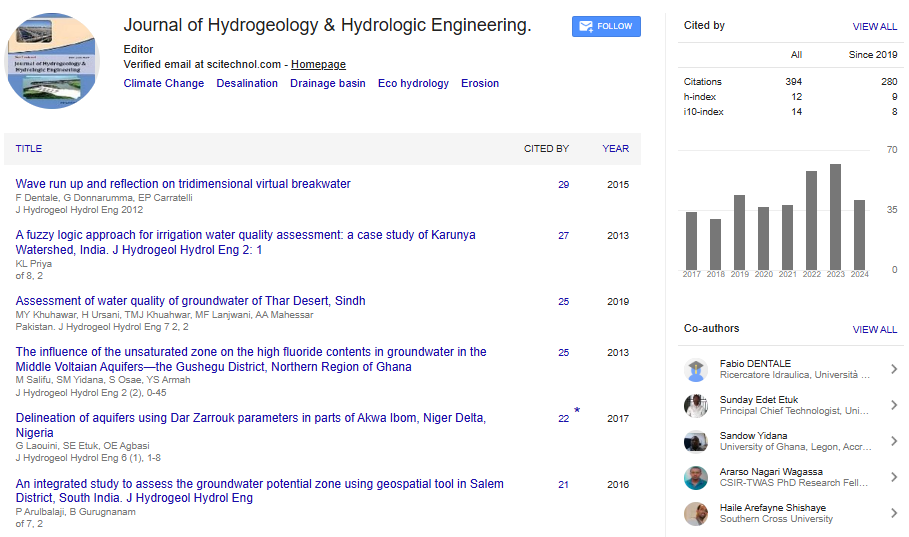Assessment of chromium contamination in the surface water and soil at the riparian of Abbay River caused by the nearby industries in Bahir Dar city, Ethiopia
Agegnehu Alemu and Nigus Gabbiye
Bahir Dar University, Ethiopia
: J Hydrogeol Hydrol Eng
Abstract
Chromium and its compounds are among the most well-known strategic and critical materials in the world having a wide range of uses in the metals and chemical industries accompanied with chromium containing byproducts resulted in pollution of the environment. Chromium exists in the environment commonly in two oxidation states; chromium(III) and chromium(VI), the later with the most toxic. The level of chromium contamination of water and soil samples in the peripheral of Abbay River were analyzed using inductively coupled plasma optical emission spectroscopy (ICP-OES), Horiba Scientific Ultima 2. The level of total chromium at the riparian of upper Abbay River both in the water and soil samples indicated higher concentrations near the wastewater discharge points from industries compared to the control site (above the industries). A sample taken near the discharge point of Habesha Tannery wastewater (S7), an average of 8.420±5.409 mg/L total chromium was analyzed, which is beyond the permissible limit to the surface water discharge set by WHO. It was also at this point, maximum chromium contamination in the soil was identified with an average of 232.465±56.219 mg/kg. This was much higher than the control 7.60±0.47 mg/kg. This study showed that the two tanneries discharge high chromium containing wastewater resulted from low treatment potential of the existing treatment plants established by the industries.
 Spanish
Spanish  Chinese
Chinese  Russian
Russian  German
German  French
French  Japanese
Japanese  Portuguese
Portuguese  Hindi
Hindi 
